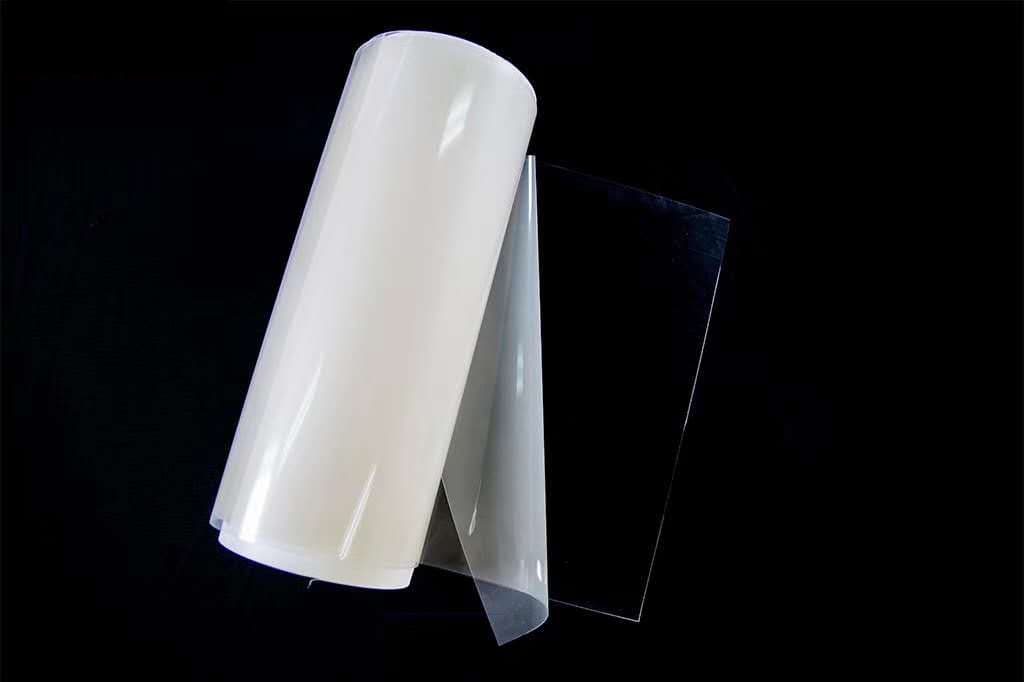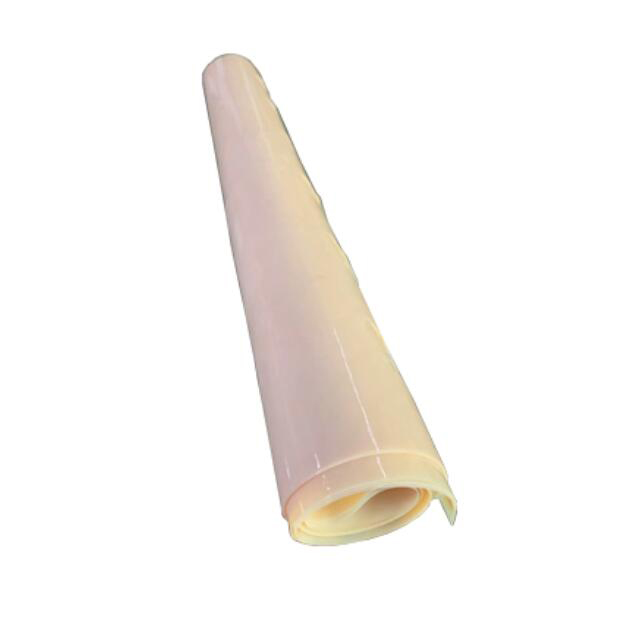Ion exchange membranes, acted as ionic selective passage, are thin films made of polymer materials with ion exchange properties (there are also inorganic ion exchange strands, but their use is not common). It is similar to ion exchange resin in that it attaches an active group to the polymer backbone, but the mechanism, method and effect are different. There are many types of ion exchange membranes on the market, and there is no uniform classification method. According to the macrostructure of the ion exchange membrane, it is divided into three categories:
1. Heterogeneous ion-exchange membrane It is made by mixing powdery ion-exchange resin with binder, drawing, and hot-pressing. The resin is dispersed in the binder, so its chemical structure is not uniform.
2. Homogeneous ion exchange membrane Homogeneous ion exchange membrane is made by introducing active groups into an inert support. It has no heterogeneous structure and is homogeneous in itself. Its chemical structure is uniform, the pores are small, the membrane resistance is small, it is not easy to leak, the electrochemical performance is excellent, and it is widely used in production. But the production is complicated and the mechanical strength is low.
3. Semi-homogeneous ion exchange membrane is also made by introducing active groups into the polymer support. However, the two do not form a chemical bond, and their properties are between the homogeneous ion exchange membrane and the heterogeneous ion exchange membrane.
In addition, according to different functions and structures, ion exchange membranes can be divided into five types: cation exchange membrane, anion exchange membrane, amphoteric exchange membrane, mosaic ion exchange membrane, and polyelectrolyte composite membrane. The structure of the ion exchange membrane is the same as that of the ion exchange resin, but it is in the form of a membrane.
The membrane resistance and selective permeability of an ion exchange membrane are important indicators of the electrochemical performance of the membrane.
The order of cation permeability in the cation is:
Li +> Na +> NH4 +> K +> Rb +> Cs +> Ag +> Tl +> Mg2 +> Zn2 +> Co2 +> Cd2 +> Ni2 +> Ca2 +> Sr2 +> Pb2 +> Ba2 +
The order of permeability of anions in the anion is:
F-> CH3COO-> HCOO-> Cl-> SCN-> Br-> CrO> NO> I-> (COO)> SO
Our company produce 5 types membrane for ion exchange and 1 type membrane for Chlor-Alkali industry as follow:
If you produce the hydrogen fuel cell,vanadium flow batteries or water treatment device, you can find the suitable membrane parts for your project.
Hope we can cooperate in the future.
The performance of ion-exchange membranes is multi-faceted, and comprehensive evaluation and analysis of membranes must be performed according to the membrane's electrochemical, chemical, and physical mechanical properties. The performance indicators are as follows:
1. Exchange capacity Exchange capacity is the key parameter of ion exchange membrane, and its unit is mmol / g. Generally, the membrane with high exchange capacity has good permeability and strong conductivity. However, since the active group is generally hydrophilic, when the content of the active group is high, the moisture and swelling degree in the film will increase accordingly, thereby affecting the strength of the film. Sometimes the membrane structure is too loose, which reduces the selectivity of the membrane. The exchange capacity of general membrane is about 1-3mmol / g.
2. Water content refers to the internal water combined with active groups in the membrane. The water content expressed in grams of water per gram of dry membrane is related to its exchange capacity and degree of crosslinking. As mentioned above, as the exchange capacity increases, Increased water content. For films with a high degree of cross-linking, the water content will also decrease due to the structure of the film. Increasing the water content of the film can increase the conductivity of the film, but the selectivity is reduced due to the swelling of the film. Generally, the water content of the film is about 20% to 40%.
3. Electrical conductivity (film resistance) is generally expressed by electrical conductivity (Ω.cm) or specific resistance (Ω.cm), and it is also commonly used to indicate the surface resistance of the film, which is the resistance per unit film area (Ω.cm). The representation of resistance varies by application. Generally speaking, the smaller the resistance is, the better it is without affecting other performance to reduce power consumption. Membrane resistance is related to membrane structure and film thickness, but also to external solutions and temperature. 25C is usually specified, and the membrane conductance measured in a 0.1mol / L KCL solution or a 0.1mol / L sodium chloride solution is used as a comparison standard.
4. Selective permeability reflects the selective permeability of the membrane to different ions, expressed by the number of ion migration (t) and the transmittance (p) of the membrane. The number of ion migration in the membrane is the ratio of the migration amount of a certain ion in the membrane to the migration amount of all ions in the membrane. Alternatively, it can also be expressed as the ratio of the amount of charge carried by ion migration. For an ideal ion exchange membrane, the migration number of counter ions is 1, and the migration number of the same name is 0. In fact, due to various factors, the actual migration of counter ions in the membrane may reach 1. There are two methods to get the ion migration number of the membrane. One is the membrane potential method, which measures the membrane potential of the membrane in two different concentrations of similar electrolytes, and then calculates the migration number from the membrane potential. Another method is to directly measure the migration number of the membrane in an electrodialysis cell under an external DC electric field. Generally, the practical ion exchange membrane has a permeability of greater than 85% and a counterion migration number of greater than 0.9. It is hoped that good selective permeability is still present in high-concentration electrolytes.
5. Mechanical strength The mechanical strength of the film includes the burst strength and tensile strength of the film, as well as the bending strength and flexibility. Bursting strength refers to the highest pressure that the membrane can withstand when subjected to vertical pressure. It is measured by hydraulic blasting method and expressed in terms of pressure per unit area (MPa). It is an important indicator of the mechanical strength of the membrane. Tensile strength refers to the highest tensile force that a film can withstand when it is pulled from an equal direction. It is expressed in MPa. The mechanical strength of the film mainly determines the chemical structure, reinforcing material, etc. The enhanced degree of crosslinking can increase the mechanical strength of the membrane, while increasing the exchange capacity and water content will reduce the strength. Generally, the tip of the membrane is greater than 0.3 MPa.
6, expansion performance (dimensional stability) film expansion and contraction should be as small and uniform as possible. Otherwise, it will not only cause assembly, but also cause bad phenomena such as increased head loss, water leakage, leakage, and current rate reduction.
7.Chemical properties refer to the properties of membranes that are resistant to acids and alkalis, solvents, oxidation, radiation, temperature, and organic pollution.







